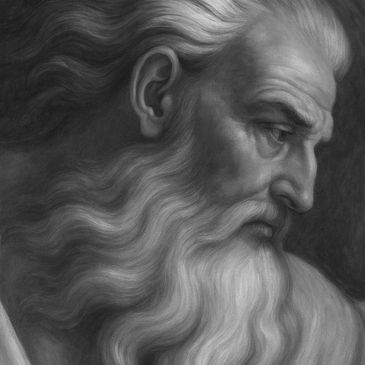
Leonardo da vinci
Leonardo da vinci
Leonardo da vinci
“Experiment & experience.” “Describe the tongue of a woodpecker.”
Born in Vinci, Italy, Leonardo’s routes stretched across Florence, Milan, and eventually France. His notebooks carried observations of rivers, mountains, and seasonal skies — geography as muse. He studied how spring floods shaped landscapes, and his dissections of nature were tied to the rhythms of Italian seasons.

Michelangelo
Leonardo da vinci
Leonardo da vinci
"Ideas are a natural function of the mind as breathing is a function of the lungs.”
“People who pay quickly pay twice.”
Florence and Rome defined his path, with marble from Carrara’s quarries (routes up the Apennines, winter roads frozen, summer paths heavy with dust). His frescoes reflect timeless devotion but also the physical geography of stone, scaffolding, and light.

Rembrandt
Leonardo da vinci
Claude Monet
Amsterdam’s canals and the low Dutch skies were his theatre. The Golden Age merchants timed their commissions with spring voyages and winter markets, embedding geography and seasonal commerce into his portraits.

Claude Monet
Leonardo da vinci
Claude Monet
The painter of light worked in Normandy, Paris, and Giverny, his routes tied to the Seine and its shifting moods. His haystack series tracked the time of year — morning frost, late summer haze, autumnal burn.

Piet Mondrian
Jackson Pollock
Piet Mondrian
From Amsterdam to Paris to New York, his grids mirror urban geography and the rhythm of 20th-century movement. His inspiration was not seasonal but rooted in the geometry of cities and modern transport.

Salvador Dalí
Jackson Pollock
Piet Mondrian
Catalonia’s coast shaped his surreal landscapes. The cliffs of Cadaqués, the Mediterranean glare of summer, the dry fields of August — these are the geography of his dreamscapes.

Jackson Pollock
Jackson Pollock
Jackson Pollock
Wyoming roots, New York routes. His canvases were maps of energy, seasons of chaos, action painting echoing the frontier’s wide geography.

Pablo Picasso
Jackson Pollock
Jackson Pollock
Spain to Paris to the world. His Blue Period carried winter melancholy, his Rose Period spring warmth, his Cubism a timeless architecture of perspective.
Good Reads
- Masters of Art – Piet Mondrian (Piet Mondrian & Peter Russell)
Takeaway: Mondrian’s grids distilled nature into rhythm, balance, and pure color.
- Jackson Pollock: A Life from Beginning to End (Hourly History)
Takeaway: From control to “drip,” Pollock’s method redefined gesture as subject.
- Mondrian: His Life, His Art, His Quest for the Absolute (Nicholas Fox Weber)
Takeaway: A lifelong pursuit of abstraction as a spiritual clarity.
- In Montparnasse (Sue Roe)
Takeaway: A frontline history of how Paris incubated surrealism and cross-pollinated modern art.
- Jeff Koons: A Dialogue with Classic Art (N. P. James)
Takeaway: Koons reframes antiquity through scale, polish, and pop mediation.
- The Agony and the Ecstasy (Irving Stone)
Takeaway: Michelangelo’s genius is work ethic and devotion under pressure.
- Leonardo da Vinci (Walter Isaacson)
Takeaway: Obsessive curiosity plus cross-discipline note-taking equals durable creativity.
- Colour: Travels Through the Paintbox (Victoria Finlay)
Takeaway: Pigments are trade routes, myth, chemistry, and culture in a tube.
- I Wanna Be Yours (John Cooper Clarke)
Takeaway: Performance poetry as lived archive—snapshots of scene, sound, and street wit.
This website uses cookies.
We use cookies to analyze website traffic and optimize your website experience. By accepting our use of cookies, your data will be aggregated with all other user data.